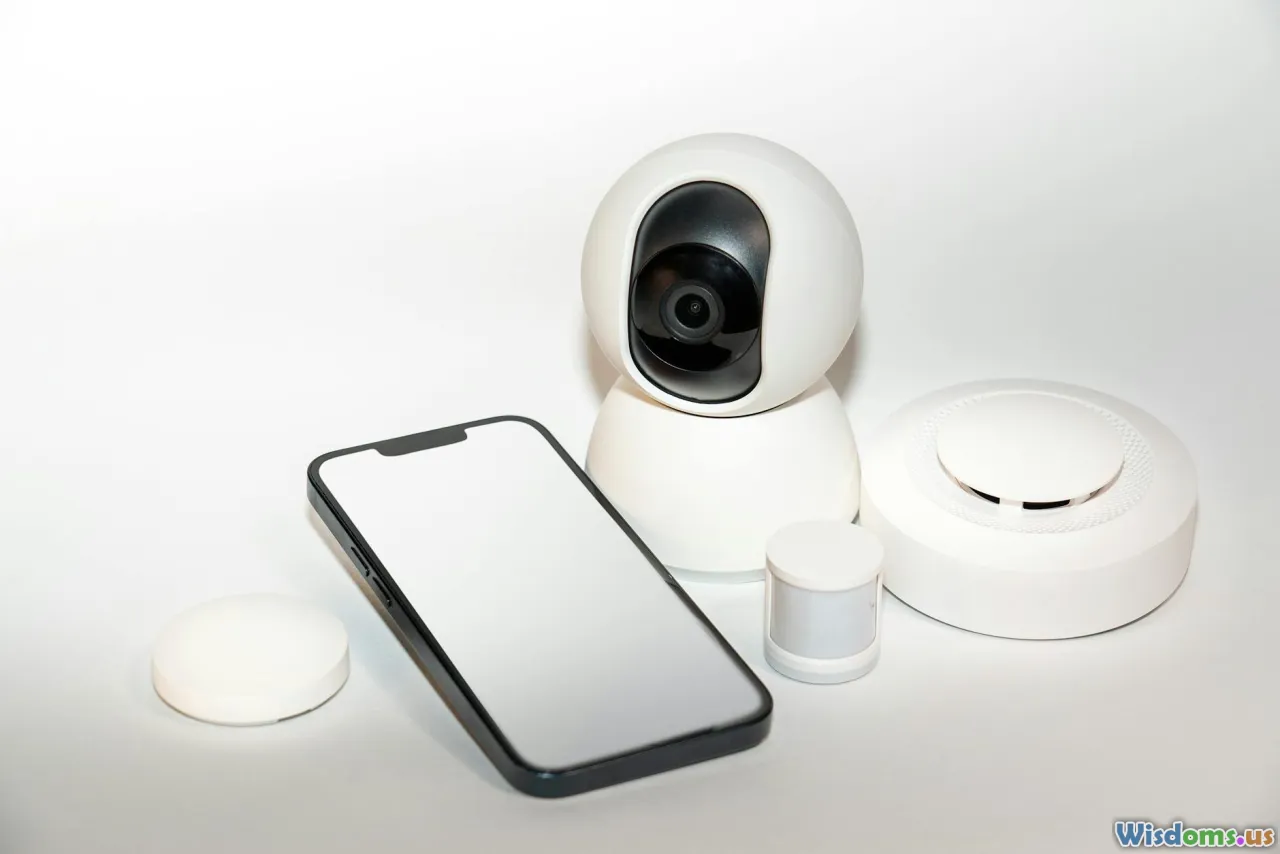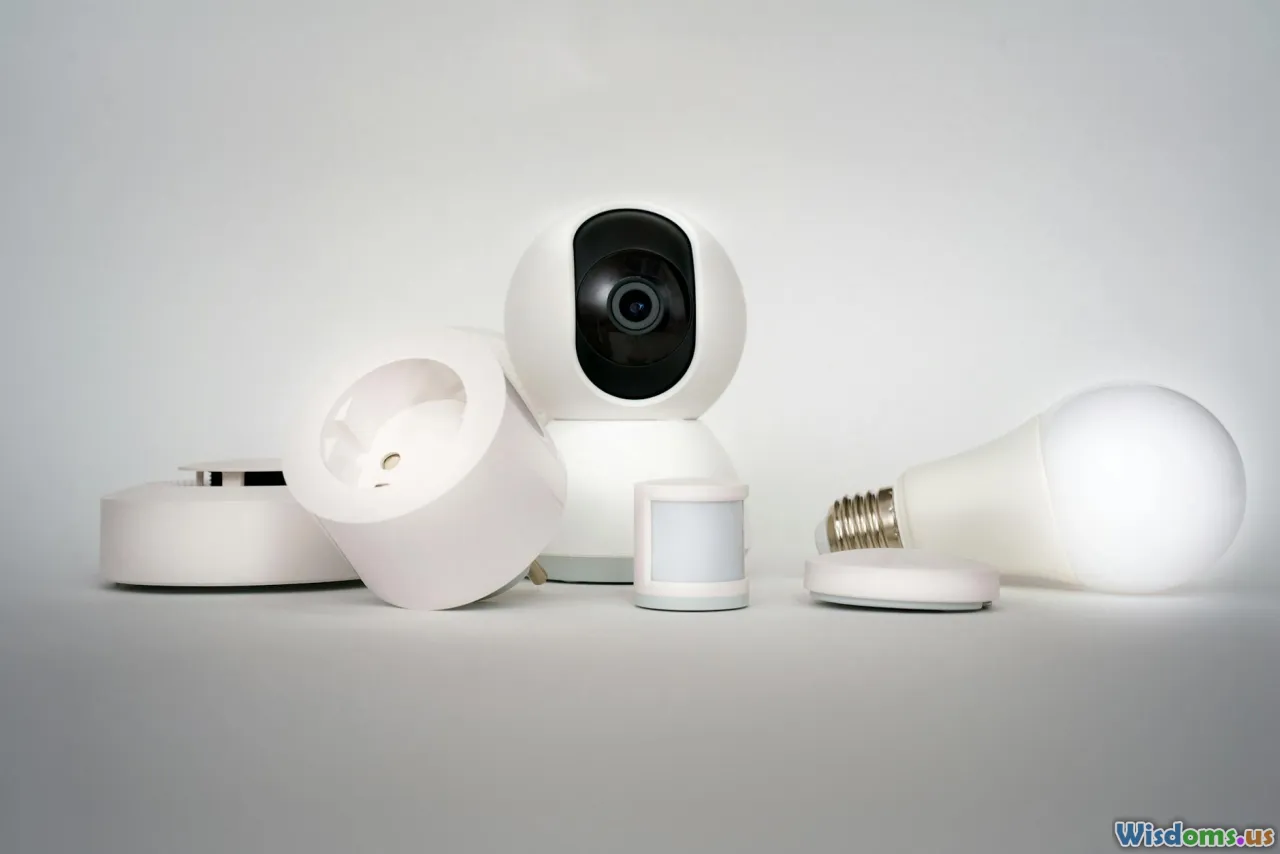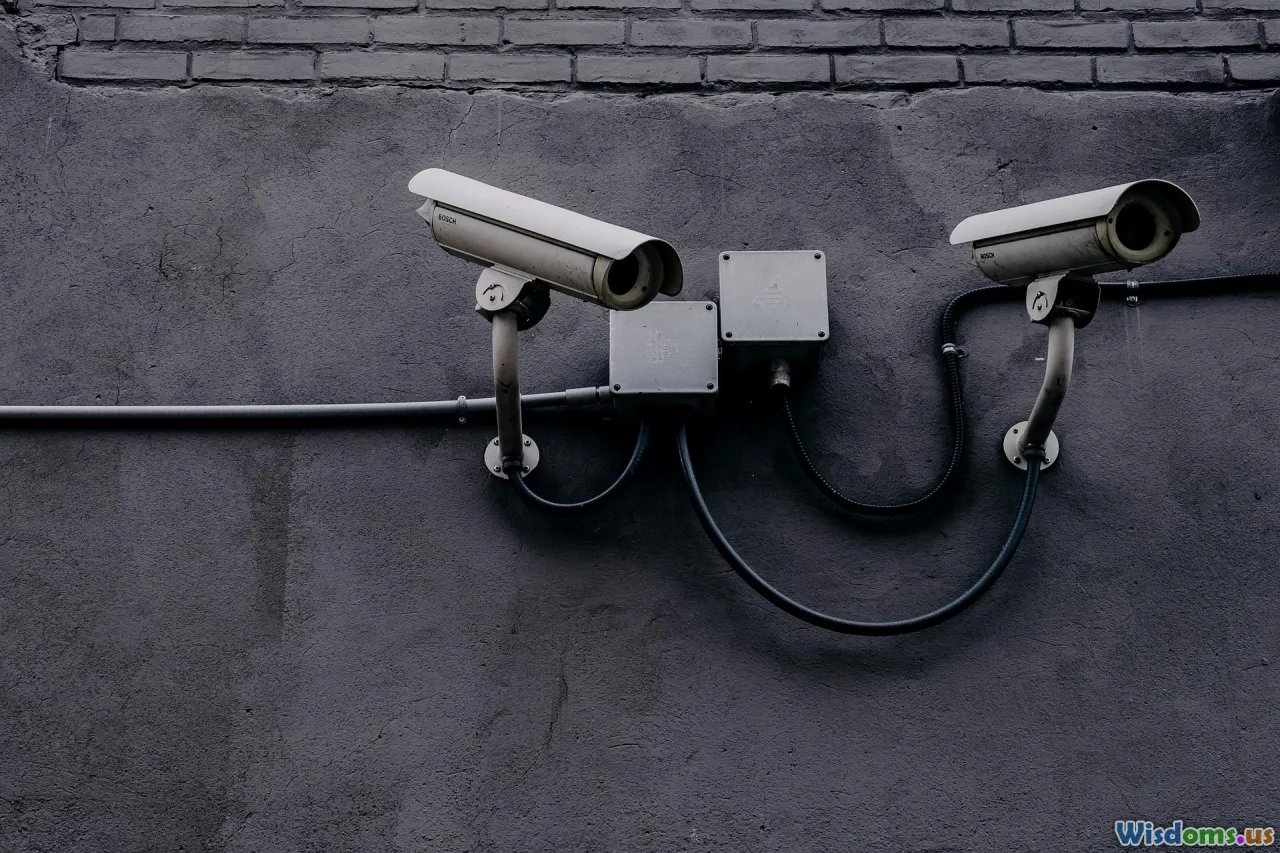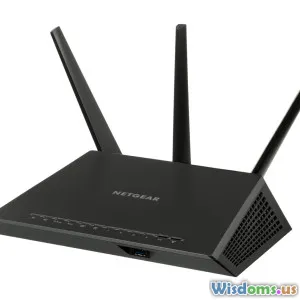
Can Smart Homes Survive Cyberattack Surges?
16 min read Explores how smart homes can withstand rising cyberattacks and boost digital resilience. (0 Reviews)
Can Smart Homes Survive Cyberattack Surges?
Smart homes were once the stuff of science fiction, but today, internet-connected thermostats, voice assistants, doorbells, and cameras fill millions of residences. They promise convenience, energy savings, and safety—but as these devices multiply, so do cyber threats targeting them. In recent years, cyberattacks on smart devices have not only become more frequent but also alarmingly sophisticated. With this relentless surge, the question is pressing: can our smart homes truly defend themselves in the face of evolving cyber risks?
Understanding the Magnitude of the Threat

Imagine arriving home after work—only to find your smart lock reprogrammed, or your surveillance camera feed hijacked. This scenario is far from rare. According to Palo Alto Networks' 2023 IoT Security Report, 70% of smart home devices are vulnerable to cyberattacks. Malware designed for smart TVs, refrigerators, and baby monitors is circulating on the dark web, making unprotected homes easy targets.
Take the widespread Mirai botnet incident in 2016 as an early warning: hackers infiltrated thousands of IoT devices such as security cameras, using them to launch distributed denial-of-service (DDoS) attacks that took down major websites. More recently, in 2022, VPNFilter malware evolved to infect over 500,000 smart routers, enabling hackers to eavesdrop or shut down connected devices remotely. These attacks demonstrate a sobering reality—smart home device security often lags behind the pace of innovation.
Why Are Smart Homes So Vulnerable?

Even as smart home platforms make life more streamlined, their interconnectedness becomes their Achilles' heel. Most smart devices prioritize usability and quick installation over robust security. Here are the most common vulnerabilities:
- Default Passwords: Manufacturers often set generic or simple default credentials, expecting homeowners to change them—many don’t.
- Unpatched Software: Firmware updates often slip under the radar, leaving outdated devices open for exploitation.
- Insecure Communication Protocols: Devices communicating over unencrypted channels leak sensitive data and can be spoofed or hijacked.
- Lack of Security Standards: Many smart products hit the market with minimal regulation or defined cybersecurity protocols.
A 2022 study by the Ponemon Institute found that nearly 60% of consumers never update their home device firmware. Additionally, the sheer variety—security cameras, smart locks, light bulbs—means users juggle multiple ecosystems, each with their own settings and vulnerabilities. All it takes is a single weak point for a sophisticated attacker to compromise an entire home network.
Anatomy of a Real-world Smart Home Breach

Consider the case of "Kevin," a Boston resident who noticed unusual activity from his smart home security app in late 2021. One night, both the temperature in his house began rising and the front door unlocked unexpectedly. Panic ensued, and subsequent investigation revealed hackers had exploited a vulnerability in his smart thermostat—gaining access to his Wi-Fi credentials, which they leveraged to control other devices and download personal data.
In another report, a Redditor described their family being woken up by a blaring alarm—their smart assistant had been remotely hacked in order to spam offensive noises through the speaker system. While these examples range from privacy violations to outright harassment, they reflect broader trends: attacks now extend beyond mere spying, encompassing physical entry, extortion, and emotional harm.
Are Manufacturers Doing Enough?

Vendors play a decisive role, but economic pressures and competitive release cycles often mean security is an afterthought. While some companies have adopted secure-by-design policies, many budget models still lack basic protections.
Apple leads with "HomeKit Secure Video"—offering end-to-end encrypted footage and forceful privacy controls. Google’s Nest platform has improved two-factor authentication (2FA) and firmware auto-updates. Ring, after a series of high-profile breaches, added mandatory 2FA and improved vulnerability reporting.
However, many manufacturers remain anonymous or unresponsive after vulnerabilities are reported. The proliferation of white-label generic products on marketplaces like Amazon, often with dubious origins, poses further risks. The European Union’s Cyber Resilience Act and the US Cyber Shield program are steps toward accountability, but until international standards are not just published but enforced, the market will continue to offer both fortresses and open doors masquerading as smart homes.
Bolstering Your Smart Home: Practical Protection Measures

Homeowners need not wait for regulation to shore up digital defenses. Here’s how to turn your smart home from vulnerable to vigilant:
1. Always Change Default Settings
Set unique, strong passwords for every device from the start. Where available, enable 2FA for apps and cloud accounts.
2. Keep Firmware and Apps Updated
Most breaches exploit known flaws. Check for automatic updates or routinely review manufacturer websites for downloads.
3. Segment Your Network
Configure a dedicated guest Wi-Fi for smart devices, separate from computers and phones. If one device is compromised, private data on the main network remains isolated.
4. Disable Unused Features
Turn off remote access, microphones, and cameras on devices unless necessary. Cover camera lenses or unplug devices when traveling.
5. Monitor Connected Device Behavior
Use your router’s dashboard or a network-scanning app to periodically review which gadgets are connecting and whether unusual data traffic occurs.
6. Research Before You Buy
Prioritize brands with documented security standards, clear privacy policies, and a commitment to firmware updates. User forums and security bulletins can reveal red flags missed in glossy marketing material.
Real-life example: After a spate of neighbor hacks, engineer Sarah Tomas custom-built a Raspberry Pi device to monitor outgoing packets from her smart speakers, flagging when connections head to suspicious domains. This actionable vigilance paid off—her logs alerted her to an attempted botnet infection days before the manufacturer announced a patch.
The Role of Artificial Intelligence in Smart Home Defense

AI’s integration into smart home security is already reshaping the landscape. AI-powered firewalls and machine learning models embedded in modern routers now analyze network traffic for anomalies, offering real-time intrusion detection. For example, Bitdefender’s "Box" and Norton’s "Core" home security hubs use pattern recognition to shut down unfamiliar transmission, preventing malware from spreading across connected devices.
Furthermore, some smart assistants can recognize unfamiliar voices and require an extra layer of identity verification. Upcoming advances will likely include:
- Behavioral Biometrics: Using typing patterns or daily device usage routines to spot unauthorized access.
- Automated Security Policy Enforcement: Systems adapting firewall rules based on threat intelligence feeds or emerging attack vectors.
However, it’s worth noting that AI-based security is not foolproof; adversarial AI can exploit models, and these systems require regular updates themselves. Nonetheless, as attacks grow in sophistication, AI’s capacity for learning and adaptation offers hope for staying ahead of would-be intruders.
Comparing Smart Home Security Solutions

There is a wealth of security solutions for consumers, ranging from free utilities to all-in-one managed services. How do they stack up?
| Feature | Basic Consumer Router | IoT Firewalls (e.g., Bitdefender Box) | Enterprise-like Solutions (e.g., Cisco Umbrella) |
|---|---|---|---|
| Automatic Threat Blocking | Limited | Yes | Yes |
| Device Segmentation | Rare | Some | Yes |
| AI-Based Detection | No | Yes | Advanced |
| Monthly Fee | No/Minimal | $10-20 | $30+ |
| User Complexity | Low | Low-Moderate | High |
Key Takeaway: Most homes benefit from mid-tier options. IoT firewalls offer a balance by automating threat detection, simplifying segmentation, and maintaining ease-of-use—all critical for non-technical users. High-end enterprise solutions, though powerful, are often overkill for residential environments.
National and Global Policy Initiatives

From California’s "IoT Security Law" (SB-327), which requires unique passwords on all consumer devices, to the UK's Product Security and Telecommunications Infrastructure Bill, regulations are beginning to shape the smart home market. The EU’s Cyber Resilience Act promises both technical benchmarks and massive fines for lagging manufacturers.
Yet, policy gaps remain. Most jurisdictions rely on voluntary disclosure of vulnerabilities and leave enforcement toothless. Security advocates argue for standardized certifications—similar to the Underwriters Laboratories (UL) label for electrical safety—backed by active compliance checks. Such labeling could allow consumers to compare devices’ security features at a glance, pressuring manufacturers to compete on trustworthiness rather than just price and style.
There is momentum, but it’s early days; implementation lags behind threat evolution. Advocates see promise in a hybrid approach—regulatory floor for baseline protection, with market innovation on top.
Emerging Threats: What the Future Holds

Today's attackers are nimble, exploiting weak points faster than most defenses can adapt. Deepfake voice attacks, where hackers mimic a homeowner’s voice to issue commands through a smart speaker, are already in the wild and improving via generative AI. Ransomware groups eyeing smart home networks may soon increase in sophistication, encrypting device controls and demanding crypto payments for access.
As cars, medical devices, and even kitchen appliances become smarter, the so-called "attack surface" grows. Security researchers at DEF CON 2023 demonstrated how connecting a smart fridge with a vulnerable microchip could grant access to a home’s Wi-Fi network, eventually unlocking doors or disabling alarms—all through lackluster firmware on a glorified icebox.
Furthermore, with the rise of edge computing—where more processing occurs locally on the device—attackers are finding creative ways to bypass cloud-based protections by worming into the increasingly powerful hardware within smart homes themselves.
Building Resilience: A Shared Responsibility

The future of smart homes isn’t doomed to digital chaos. Survival and resilience depend on collective vigilance: manufacturers embedding security from design phase to long-term support; policymakers enacting, enforcing, and updating standards; and homeowners investing not only in gadgets’ features, but also in their safe operation.
Above all, a shift in mindset is needed—smart homes are not "set-and-forget" systems. As these devices learn about us, we must also learn about their risks and safeguards. Homeowners, technologists, and lawmakers now collaborate at the intersection of comfort, convenience, and digital safety. As technology evolves, only shared responsibility can ensure that the benefits of intelligent living eclipse the growing shadows of cyber threats.
In a world where your lights, locks, and even coffee machine are smarter than ever, their survival against surging cyberattacks is as much about preparation today as innovation tomorrow. With care, awareness, and commitment at every link in the chain, the smart home can be both futuristic—and safe.
Rate the Post
User Reviews
Popular Posts



















